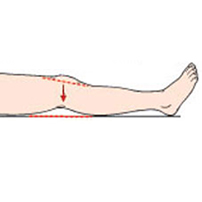To become a good observer, you need to look for many of the same things doctors and nurses look for in patients. Begin by knowing what is normal. As you become comfortable as an observer, you will begin to notice more about the person you care for. Make it a habit to observe the person you care for each day as they take part in their daily routines.
Physical Appearance
When you first look at someone, notice how alert and attentive they are and how they respond to your questions.
Your first thoughts are important. Do you notice any signs of the person being in distress? For example, does the person breathe normally with little movement of their chest or does he or she gasp for air?
Weight
A person’s weight can change suddenly or slowly over time. For example, a change in appetite due to depression, pain or disease such as cancer, is a common cause of weight loss. A gain in weight often occurs when a person retains fluids due to heart failure.
Posture and Position
The way a person holds their body tells you a lot about their health.

Quadricepts (thigh) setting

Hip and knee movements

Foot circles
Mobility
The way a person moves about will tell you if there are problems with the bones, muscles or nerves in the body.
Behavior
A person’s behavior is always changing, but you should be a good judge of what is normal for the person you care for. A change in behavior can be an early sign of a problem. Remember, all behavior has meaning.

Mental Status
During the daily activities you spend with a person, you will talk together. Pay attention to what the person says. It will tell you about their mental status, their ability to think clearly, remember and make decisions.